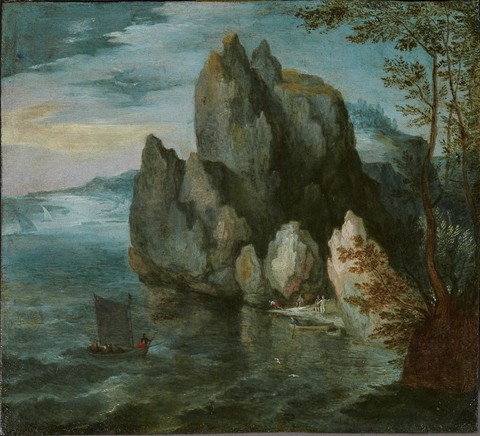Marks, Inscriptions, and Distinguishing Features
None
Entry
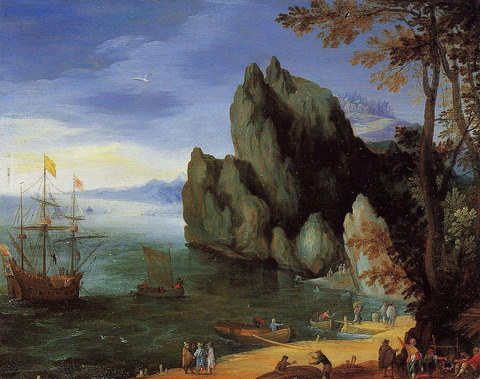
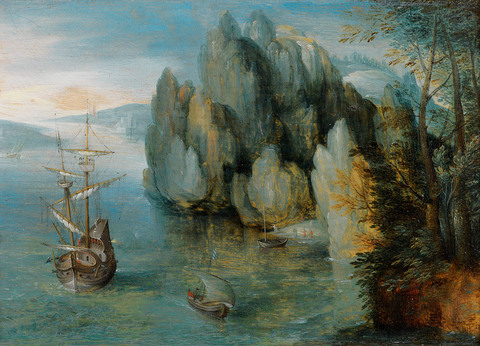
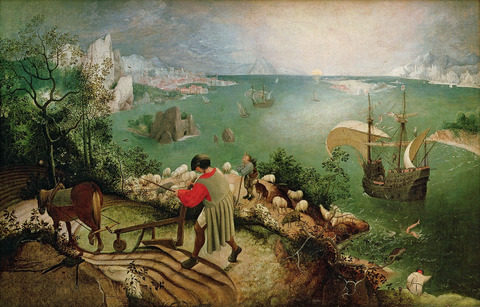
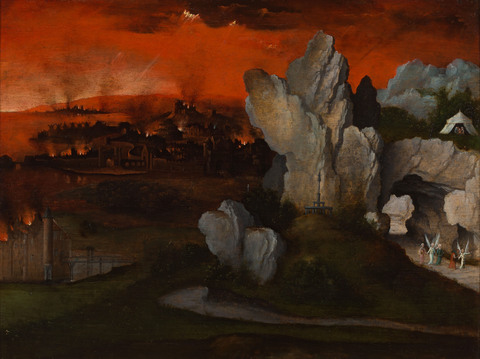
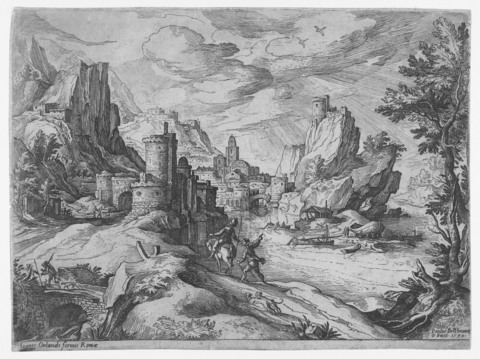
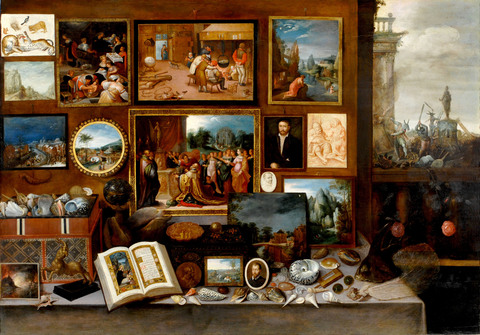
Author
Provenance
Baron Henri-Marie-Bruno-Joseph-Léon Kervyn de Lettenhove (1856–1928), St. Michel-lez-Bruges and Brussels;
By descent to Colette H. Dawson, Zionsville, Indiana, in 1948;27
Edith Whitehill Clowes, Indianapolis, in 1960;28
The Clowes Fund, Indianapolis, from 1960–2010, and on long-term loan to the Indianapolis Museum of Art since 1971 (C10014);
Given to the Indianapolis Museum of Art, now the Indianapolis Museum of Art at Newfields, in 2010.
Exhibitions
Indiana University Museum of Art, Bloomington, 1963, Northern European Painting: The Clowes Fund Collection, no. 27;
Kunsthistorisches Museum, Vienna, and Koninklijk Museum voor Schone Kunsten, Antwerp, 1997–1998, Pieter Breughel der Jüngere—Jan Brueghel der Ältere: Flämische Malerei um 1600. Tradition und Fortschritt, no. 21.
References
Henry R. Hope, Northern European Painting: The Clowes Fund Collection, exh. cat. (Bloomington, IN: Indiana University Museum of Art, 1963), no. 27;
A. Ian Fraser, A Catalogue of the Clowes Collection (Indianapolis: Indianapolis Museum of Art, 1973), 120–21, ill.;
Klaus Ertz, Jan Bruegel der Ältere (1568–1625). Die Gemälde mit kritischem Oeuvrekatalog (Cologne: DuMont, 1979), 557, under no. 1 (as not Jan Brueghel the Elder);
Klaus Ertz, Jan Brueghel the Elder: A Loan Exhibition of Paintings, exh. cat. (London: Brod Gallery, 1979), unpag., under no. 1 (as not Jan Brueghel the Elder);
Palais des Beaux-Arts, Brussels, Bruegel. Une dynastie de peintres, exh. cat. (Brussels: Europalia 80, 1980), 179, under no. 106 (as not Jan Brueghel the Elder);
Klaus Ertz, Jan Brueghel der Ältere (1568–1625) (Cologne: DuMont, 1981), 58, under no. 2 (as not Jan Brueghel the Elder);
Margarita Russell, “Paintings of Coastal Scenes by Hans and Cornelis Liefrinck of Leiden,” The Burlington Magazine 134, no. 1068 (March 1992): 177, 178 ill. (as Cornelis II Liefrinck);
Klaus Ertz and Christa Nitze-Ertz (eds.), Pieter Breughel der Jüngere—Jan Brueghel der Ältere: Flämische Malerei um 1600. Tradition und Fortschritt, exh. cat. (Lingen: Luca Verlag, 1997), no. 21, ill.
Klaus Ertz and Christa Nitze-Ertz, eds., Pieter Breughel Il Giovane (1564–1637/8)—Jan Brueghel Il Vecchio (1568–1625). Tradizione e Progresso: una famiglia di pittori fiamminghi tra Cinque e Seicento, exh. cat. (Cremona: Museo Civico Ala Ponzone, 1998), 129, under no. 34, 130, ill.;
Klaus Ertz and Christa Nitze-Ertz, Jan Brueghel der Ältere (1568–1625). Kristischer Katalog der Gemälde, vol.1, Landschaften mit profanen Themen (Lingen: Luca Verlag, 2008), 229–231, no. 99, ill.
“Brueghel Family: Jan Brueghel the Elder.” The Brueghel Family Database, University of California, Berkeley, https://www.janbrueghel.net/ (accessed February 16, 2018)
Notes
-
Fiona Beckett’s technical analysis in July 2016 revealed no evidence of a carbon-based underdrawing or underpainting, and no pentimenti, in the Clowes painting. See “Description of Composition Planning” in the Technical Examination Report. ↩︎
-
Mark Roskill’s manuscript entry on the painting makes reference to a memorandum to Dr. Clowes in the Clowes Archives and to a subsequent oral confirmation of this assessment by Professor Held. Ian Fraser accepted this attribution in a memorandum dated 17 April 1972 and subsequently published the painting as Jan Brueghel the Elder in his catalogue of the Clowes Collection. See A. Ian Fraser, A Catalogue of the Clowes Collection (Indianapolis: Indianapolis Museum of Art, 1973), 120. ↩︎
-
As stated in Klaus Ertz and Christa Nitze-Ertz, eds., Pieter Breughel der Jüngere—Jan Brueghel der Ältere: Flämische Malerei um 1600. Tradition und Fortschritt, exh. cat. (Lingen: Luca Verlag, 1997), 130. ↩︎
-
“Schwächere, reduzierte Nachfolgekopie (ohne Kriegsschiff und Vordergrundstaffage) in Indianapolis, Museum of Art, The Clowes Found [sic] Collection, von Julius Held an Jan I gegeben…” See Klaus Ertz, Jan Bruegel der Ältere (1568–1625). Die Gemälde mit kritischem Oeuvrekatalog (Cologne: DuMont, 1979), 557. This attribution would not have come as a surprise to Mrs. Clowes. A photograph of the painting must have been sent to Ertz as he prepared his catalogue, for a letter from the scholar to the Clowes Fund received 6 November 1978 more generously rejects the painting as a “copy” after Rocky Coastal Inlet with Battle Ship, which was then called Paul Bril but which Ertz considered to be by Jan Brueghel the Elder. See the letter in File C10014 (2010.40), Clowes Registration Archive, Indianapolis Museum of Art at Newfields. See also Klaus Ertz, Jan Brueghel the Elder: A Loan Exhibition of Paintings, exh. cat. (London: Brod Gallery, 1979), unpag., under no. 1. See also Palais des Beaux-Arts, Brussels, Bruegel. Une dynastie de peintres, exh. cat. (Brussels: Europalia 80, 1980), 179. See also Klaus Ertz, Jan Brueghel der Ältere (1568–1625) (Cologne: DuMont, 1981), 58. ↩︎
-
As stated in Klaus Ertz and Christa Nitze-Ertz, eds., Pieter Breughel der Jüngere—Jan Brueghel der Ältere: Flämische Malerei um 1600. Tradition und Fortschritt, exh. cat. (Lingen: Luca Verlag, 1997), 130. ↩︎
-
Klaus Ertz and Christa Nitze-Ertz, eds., Pieter Breughel der Jüngere—Jan Brueghel der Ältere: Flämische Malerei um 1600. Tradition und Fortschritt, exh. cat. (Lingen: Luca Verlag, 1997), 132. The reorganization of Ertz’s thinking—dating the Clowes painting before the Rocky Coastal Inlet with a Battle Ship—may have been partially influenced by Russell’s article, which appeared in The Burlington Magazine in 1992. See endnote 10. ↩︎
-
“Der rahmende, sich aus seiner Erderhöhung emporschlängelnde Baumstamm mit der dick anschwellenden, sich nach oben schnell verjüngenden und schliesslich spitz zulaufenden Form ist ebenso typisch wei die in weisser Höhung in vorderster Farbschicht aufgesetzten Blattbüschel oder die bizarren, wild zerklüfteten, in eigenwilligen nackten Formen auswuchernden Felsformationen. All das sind Motive, die sich später an passender Stelle wiederholden.” See Klaus Ertz and Christa Nitze-Ertz, eds., Pieter Breughel der Jüngere—Jan Brueghel der Ältere: Flämische Malerei um 1600. Tradition und Fortschritt, exh. cat. (Lingen: Luca Verlag, 1997), 130. ↩︎
-
Klaus Ertz and Christa Nitze-Ertz, Jan Brueghel der Ältere (1568–1625). Kritischer Katalog der Gemälde, vol. 1, Landschaften mit profanen Themen (Lingen: Luca Verlag, 2008), 230. In this entry, he also formally deattributes Rocky Coastal Scene, the authorship of which he had questioned in a footnote in the 1997 catalogue. See Klaus Ertz and Christa Nitze-Ertz, Jan Brueghel der Ältere (1568–1625). Kritischer Katalog der Gemälde, vol. 1, Landschaften mit profanen Themen (Lingen: Luca Verlag, 2008), 231, and Klaus Ertz and Christa Nitze-Ertz, eds., Pieter Breughel der Jüngere—Jan Brueghel der Ältere: Flämische Malerei um 1600. Tradition und Fortschritt, exh. cat. (Lingen: Luca Verlag, 1997), 132, note 3. The current owner calls it Monogrammist IF. ↩︎
-
M.L. Wurfbain, Geschildert tot Leyden anno 1626, exh. cat. (Leiden: Stedelijk Museum de Lakenhal, 1976), 91. ↩︎
-
Russell also incorporates a painting sold at Christie’s, London, on 13 December 1991, lot 121 into this group. Also painted on copper and measuring 14.6 x 17.8 cm, the painting is given to Cornelis II by Russell. See Margarita Russell, “Paintings of Coastal Scenes by Hans and Cornelis Liefrinck of Leiden,” The Burlington Magazine 134, no. 1068 (March 1992): 177, 178. ↩︎
-
She also associates the use of copper with the Haarlem-based marine painter Cornelis Vroom (about 1591–1661) in an attempt to further anchor the group of works under consideration within the realm of Holland. However, copper was favored support of the painter Paul Bril (1554–1626), whom Brueghel met during his period in Rome. Russell’s citation of the comments of painter-theorist Samuel van Hoogstraten (1627–1678) about Cornelis II—that he made “colorful seascapes with ingenious rocks”—is an inconclusive piece of evidence. See Margarita Russell, “Paintings of Coastal Scenes by Hans and Cornelis Liefrinck of Leiden,” The Burlington Magazine 134, no. 1068 (March 1992): 178. When compared with the Coastal Landscape with Granite Cliffs of about 1610–20 in the Minneapolis Institute of Art, however, the calligraphy of the waves' crests, the less fantastic articulation of the cliff faces, and the more prosaic articulation of the figures of the Minneapolis painting confirm that the two works are by different hands. ↩︎
-
See http://janbrueghel.net/janbrueghel/seascape-with-rocks (accessed 15 May 2022). ↩︎
-
She accepts the Rocky Coastal Inlet with Battle Ship as Brueghel, as supported by the opinion of the Paul Bril specialist Luuk Pijl, and rejects attributions to both Jan Brueghel the Elder and Hans II Liefrinck for the Rocky Coastal Scene. In two particularly astute and related comments in the “Discussion” section on Rocky Coastal Inlet with Battle Ship, Honig quips, “Curious that even Jan’s very earliest painting seems to exist in such a lot of copies and variants” and, “I am going, however, to deattribute also the Indianapolis seascape, or I’m going to put it as a ‘q’ number. God knows who was knocking off Ertz #1, but it wasn’t [only] JB himself.” See http://janbrueghel.net/janbrueghel/rocky-coastal-inlet-with-battle-ship (accessed 15 May 2022). ↩︎
-
His most prominent pupil was Daniel Seghers (1590–1661), who continued the collaborative garlands of “Flower” Brueghel into the second third of the seventeenth century. ↩︎
-
Karel van Mander, in his Schilder-boeck (Book of Painters) of 1604, praises him: “is in seer groot achten ghecomen, met te maken Landtschapkens, en seer cleen beeldekens, daer hy een uytnemende fraey handelingh van heeft.” See Karel van Mander, Het Schilder-boeck (Haarlem: Paschier van Wesbusch, 1604), 234r. Cornelius de Bie and Arnold Houbraken would similarly highlight his excellence in this type of landscape painting. See Cornelis de Bie, Het Gulden Cabinet van de Edel Vry Schilderconst (Antwerp: Jan Meyssens and Juliaen van Montfort, 1662), 89 and Arnold Houbraken, De groote schouburgh der Nederlantsche konstschilders en schilderessen, part 1 (The Hague: J. Swart, C. Boucquet and M. Gaillard, 1753), 85. ↩︎
-
One wonders if the wet-in-wet application in some passages may have had some precedent in his early practice of watercolor painting. ↩︎
-
On Brueghel’s life, see Klaus Ertz and Christa Nitze-Ertz, Jan Brueghel der Ältere (1568–1625). Kritischer Katalog der Gemälde, vol. 1, Landschaften mit profanen Themen (Lingen: Luca Verlag, 2008), 65–7. ↩︎
-
Ertz writes that he has reduced the oeuvre of the artist from over 3,000 paintings to approximately 300. See Klaus Ertz and Christa Nitze-Ertz, Jan Brueghel der Ältere (1568–1625). Kritischer Katalog der Gemälde, vol. 1, Landschaften mit profanen Themen (Lingen: Luca Verlag, 2008), 28. ↩︎
-
On the world landscape, see among others, Wolfgang Stechow, Dutch Landscape Painting of the Seventeenth Century (Oxford: Phaidon, 1966), 33–49; Reindert Falkenburg, Joachim Patinir: Landscape as an Image of the Pilgrimage of Life (Amsterdam/Philadelphia: John Benjamins, 1988); Walter Gibson, Mirror of the Earth: The World Landscape in Sixteenth-Century Flemish Painting (Princeton: Princeton University Press, 1989); and Boudewijn Bakker, Landscape and Religion. From Van Eyck to Rembrandt (Farnham: Ashgate, 2012), 91–114. ↩︎
-
See Klaus Ertz and Christa Nitze-Ertz, eds., Pieter Breughel der Jüngere—Jan Brueghel der Ältere: Flämische Malerei um 1600. Tradition und Fortschritt, exh. cat. (Lingen: Luca Verlag, 1997), 132, and Klaus Ertz and Christa Nitze-Ertz, Jan Brueghel der Ältere (1568–1625). Kritischer Katalog der Gemälde, vol. 1, Landschaften mit profanen Themen (Lingen: Luca Verlag, 2008), 230. Interestingly, if the Clowes painting is indeed the artist’s earliest landscape, he would resort to more conventional compositional structures in his later works, such as A Coastal Landscape with Fisherman Selling their Catch and Jonah Cast Overboard (1595, sold Sotheby’s, London, 5 December 2018, lot 11) and Harbor Scene with Christ Preaching (1597, on loan from a private collection to National Gallery, London). A painting cited by Mark Roskill in his manuscript mentions a comparable landscape in the collection of Lord Hesketh. This painting, no longer considered to be by the master himself, displays the same distinctive rock formation as in the Clowes and related paintings, though in reverse. As in the two paintings just mentioned, this example decenters the rock formation. The Hesketh painting sold at Sotheby’s, London, 3 December 2008, lot 8. ↩︎
-
The oft-quoted phrase is “In zijn reysen heeft hy veel ghesichten nae t'leven gheconterfeyt, soo datter gheseyt wort, dat hy in d'Alpes wesende, al die berghen en rotsen had in gheswolghen, en t'huys ghecomen op doecken en Penneelen uytghespogen hadde, soo eyghentlijck con hy te desen en ander deelen de Natuere nae volghen.” See Karel van Mander, Het Schilder-Boeck (Haarlem: Paschier van Wesbusch, 1604), 233r. ↩︎
-
Some art historians seek to associate these rocky outcroppings with landscape features in the real world. Christopher Brown, for example, describes Patinir’s origins in the Dinant region of modern-day Belgium as the source for his dramatic cliffs. See Christopher Brown, Rubens’s Landscapes: Making and Meaning (London: National Gallery, 1996), 13. Similarly, the current owner of A Rocky Coastal Scene has made a connection to rock formations that can be seen in the Cabo Verde Islands west of Mauritania. ↩︎
-
On Pieter Bruegel’s influence on the next generation of images of coastal landscapes, see Teréz Gerszi, “Pieter Bruegels Einfluss auf die Herausbildung der Niederländischen See- und Küstenlandschaftsdarstellung,” Jahrbuch der Berliner Museen 24 (1982): 143–87. On his Alpine landscapes on paper, see entries 22–35 by Nadine M. Orenstein in Nadine M. Orenstein, ed., Pieter Bruegel the Elder. Drawings and Prints, exh. cat. (New York: Metropolitan Museum of Art, 2001), 120–36. ↩︎
-
Carla Hendriks, “The Lives and Work of Matthijs and Paul Bril,” in Carla Hendriks et al., Northern Landscapes on Roman Walls. The Frescoes of Matthijs and Paul Bril (Florence: Centro Di, 2003), 20. ↩︎
-
See the comment dated 4 February 2015 under “Discussion” at http://janbrueghel.net/janbrueghel/seascape-with-rocks (accessed 15 May 2022). Francken took some liberties with the composition, such as relocating the fishing boat closer to the shore and enlarging the overall dimensions, but the square format correlates closely to Seascape with a High Cliff. ↩︎
-
Its presence as an artistic achievement is further elevated by the scene of iconoclasm taking place in the right portion of the painting. ↩︎
-
Upon the death of Baron Henri Kervyn de Lettenhove in 1928, his estate was divided between his wife (died 1934) and one surviving child, the Vicomtesse Roger le Sergeant d’Hendecourt (died 1942). The four children of the latter were minors on the death of their father, two died in 1945, and the estate remained undivided until 1948, when it was inherited by Colette Dawson and her sister. For this family history, see Letter from John W. Dawson to Allen W. Clowes, 23 September 1960, File: Dawson Art Purchase—August 1960, Clowes Registration Archive, Indianapolis Museum of Art at Newfields. ↩︎
-
Sales agreement, 19 August 1960, File C10014, Clowes Registration Archive, Indianapolis Museum of Art at Newfields. ↩︎
